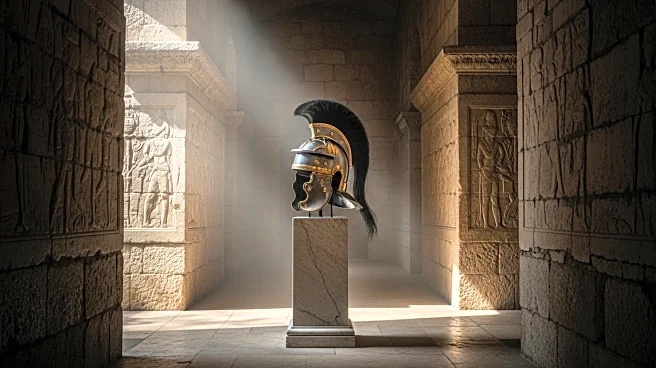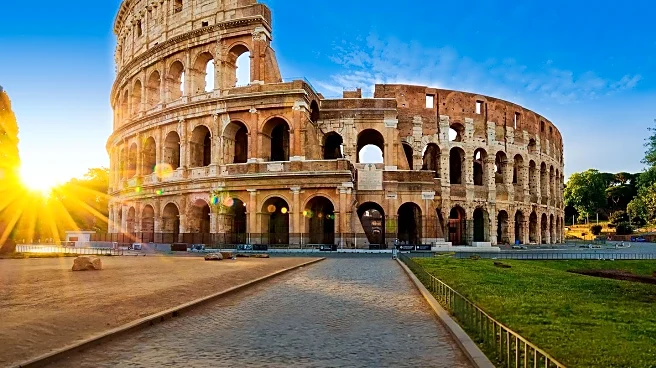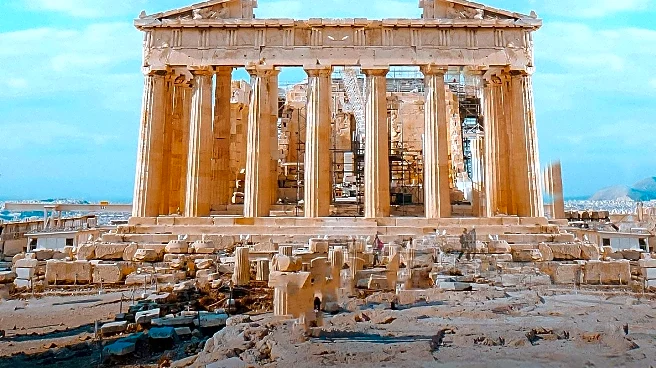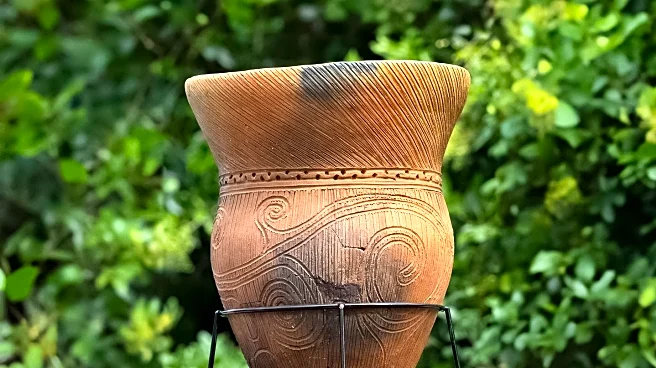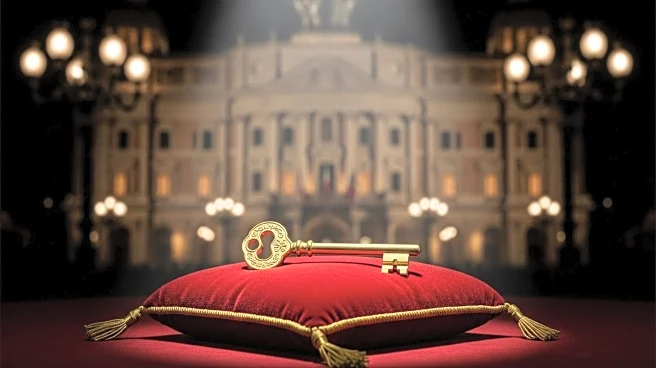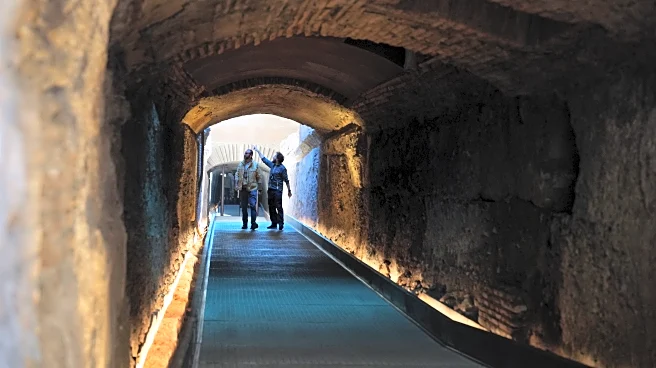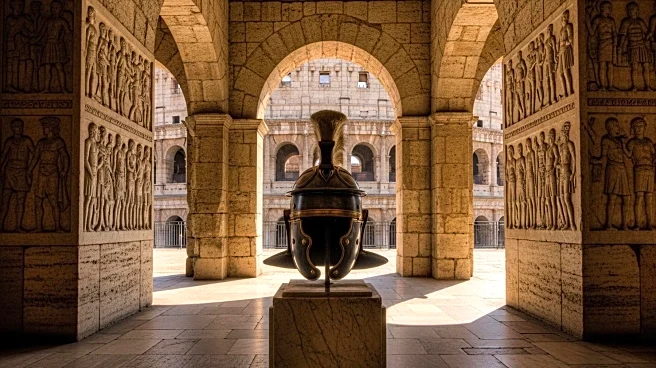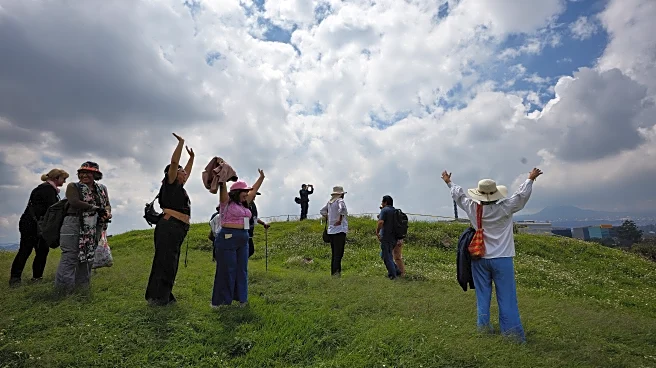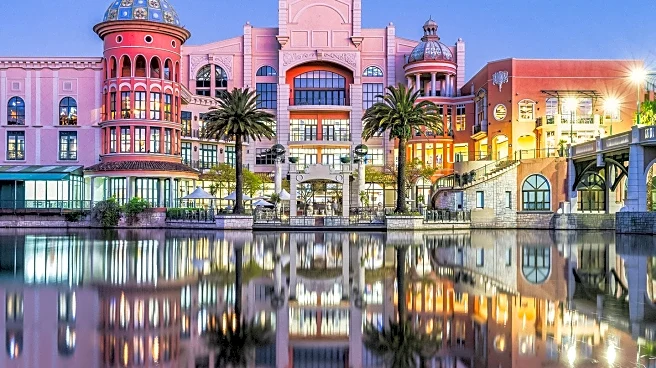What's Happening?
Rome's Colosseum has unveiled a secret passage known as the Commodus Passage to the public. This underground tunnel, historically reserved for emperors, allowed them to move unseen to the imperial box to watch events in the arena. The passage features stucco work depicting gladiators, bear fights, acrobats, and mythological scenes, such as Bacchus and Princess Ariadne. Named after Emperor Commodus, the tunnel is linked to his reign, marked by brutality and ineptitude. Commodus, who fancied himself as Hercules, was eventually assassinated by a wrestler named Narcissus. The opening of this passage offers visitors a glimpse into the opulent and secretive aspects of ancient Roman imperial life.
Why It's Important?
The opening of the Commodus Passage provides a unique opportunity for tourists and historians to explore a lesser-known aspect of Roman history. It enriches the cultural and historical understanding of the Colosseum, one of the most iconic landmarks in the world. This development is significant for the tourism industry, potentially boosting visitor numbers and enhancing Rome's appeal as a historical destination. It also underscores the importance of preserving and showcasing historical sites, offering educational insights into ancient civilizations and their societal structures.
What's Next?
The restoration and opening of the Commodus Passage may lead to further archaeological discoveries and restorations within the Colosseum. It could inspire similar initiatives to uncover and preserve other hidden historical sites in Rome and beyond. The increased tourist interest might prompt additional investments in infrastructure and services to accommodate the influx of visitors, ensuring the preservation of the site while enhancing visitor experience.
Beyond the Headlines
The unveiling of the Commodus Passage highlights the ethical considerations in preserving historical sites. Balancing public access with conservation efforts is crucial to maintaining the integrity of such sites. It also raises cultural questions about how history is interpreted and presented to the public, influencing perceptions of ancient civilizations.

